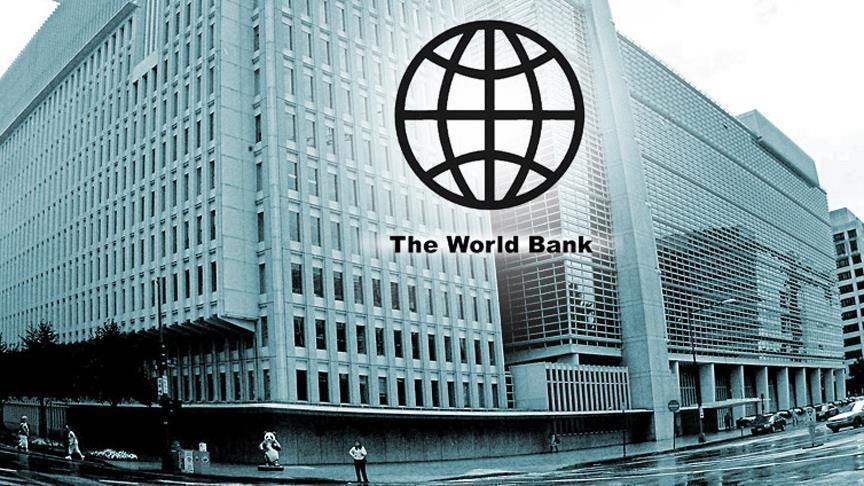News Flash
News Flash

DHAKA, Jan 10, 2024 (BSS) - Growth in South Asia (SAR) is estimated to have slowed slightly to 5.7 percent in 2023, yet it remains the fastest among emerging market and developing economy regions.
This is largely attributed to a robust expansion in India, which accounted for more than three-fourths of the regional output in 2023.
Excluding India, however, activity was more subdued.
According to the World Bank's latest Global Economic Prospects report, in Bangladesh, growth is estimated to have slowed in FY 2022/23 (July 2022 to June 2023), as activity was hampered by import restrictions and rising material and energy costs, as well as mounting external and financial pressures.
The impact of earlier import restrictions, which were subsequently lifted, along with previous monetary policy tightening, weighed on growth in Nepal.
The World Bank said Bangladesh's economic growth is forecast to slow to 5.6 percent in the current fiscal year of 2023-24, the World Bank said.
However, the country's economy is likely to pick up at 5.8 percent in the next fiscal year (FY25).
"Inflation is likely to remain elevated, weighing on private consumption. As foreign exchange reserves are likely to stay low, import restrictions are expected to continue and impede private investment," the WB said.
In contrast, public investment is envisaged to remain resilient.
The economic growth is expected to rise in the next financial year as inflationary pressure recedes, the report said.
In India, despite some slowing, a strong performance in 2023 was driven by robust public investment growth and vibrant services activity.
Output in Pakistan is estimated to have contracted during FY 2022/23 (July 2022 to June 2023). Inflation remained elevated, partly reflecting large currency depreciation in early 2023.
However, towards the end of 2023, Pakistan's currency exhibited signs of stabilization.
Growth in SAR is expected to edge slightly lower to a still-robust 5.6 percent pace in 2024, before firming to 5.9 percent next year. Domestic demand, including public consumption and investment, will remain major drivers of economic growth. A pickup in external demand, albeit still subdued, is also expected to contribute to growth.
In India, growth is expected to edge up to 6.4 percent in FY 2024/25 (April 2024 to March 2025) after softening to 6.3 percent in FY 2023/24.
The outlook in Pakistan remains subdued for FY 2023/24. Monetary policy is expected to remain tight to contain inflation, while fiscal policy is also set to be contractionary.
The outlook in Sri Lanka remains uncertain, amid debt restructuring negotiations, particularly with private creditors.
Investment related to the tourism sector will support growth in Maldives, while the commissioning of a new hydro plant in Bhutan is expected to contribute to a pickup in growth in the next fiscal year.
Risks to the forecast remain tilted to the downside, with the most pressing concerns revolving around higher energy and food prices caused by an escalation of the conflict in the Middle East and adverse spillovers stemming from larger-than-expected increases in policy rates in advanced economies.
Heightened uncertainty around elections in 2024 in some countries is also a downside risk in the region. However, the implementation of growth-friendly policies after elections could improve growth prospects.
"Without a major course correction, the 2020s will go down as a decade of wasted opportunity," said Indermit Gill, the World Bank Group's Chief Economist and Senior Vice President.
"Near-term growth will remain weak, leaving many developing countries-especially the poorest-stuck in a trap: with paralyzing levels of debt and tenuous access to food for nearly one out of every three people. That would obstruct progress on many global priorities." added Gill.
The report said as the world nears the midpoint of what was intended to be a transformative decade for development, the global economy is set to rack up a sorry record by the end of 2024 -the slowest half-decade of GDP growth in 30 years.
By one measure, the global economy is in a better place than it was a year ago: the risk of a global recession has receded, largely because of the strength of the U.S. economy. But mounting geopolitical tensions could create fresh near-term hazards for the world economy.
Meanwhile, the medium-term outlook has darkened for many developing economies amid slowing growth in most major economies, sluggish global trade, and the tightest financial conditions in decades. Global trade growth in 2024 is expected to be only half the average in the decade before the pandemic.
Global growth is projected to slow for the third year in a row-from 2.6% last year to 2.4% in 2024, almost three-quarters of a percentage point below the average of the 2010s.
Developing economies are projected to grow just 3.9%, more than one percentage point below the average of the previous decade. After a disappointing performance last year, low-income countries should grow 5.5%, weaker than previously expected.
By the end of 2024, people in about one out of every four developing countries and about 40% of low-income countries will still be poorer than they were on the eve of the COVID pandemic in 2019. In advanced economies, meanwhile, growth is set to slow to 1.2% this year from 1.5% in 2023.
To tackle climate change and achieve other key global development goals by 2030, developing countries will need to deliver a formidable increase in investment -about $2.4 trillion per year. Without a comprehensive policy package, prospects for such an increase are not bright. Per capita investment growth in developing economies between 2023 and 2024 is expected to average only 3.7%, just over half the rate of the previous two decades.
The report offers the first global analysis of what it will take to generate a sustained investment boom, drawing from the experience of 35 advanced economies and 69 developing economies over the past 70 years.